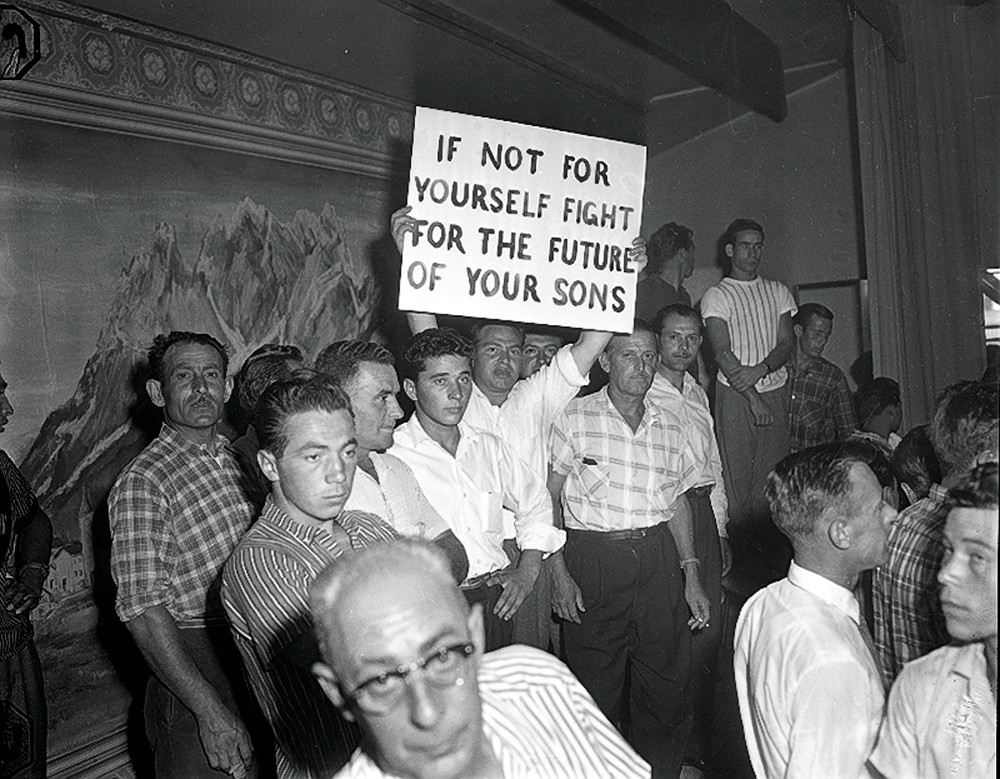Helen Lam | Contributor
Featured Image: New exhibit highlights the contributions immigrant construction workers have made to Toronto’s infrastructure. | Courtesy of YFile
A research project titled “City Builders: An Oral History of Immigrant Construction Workers in Postwar Toronto,” initiated by The Robarts Centre for Canadian Studies, rewinds and zooms in to a time when many immigrant workers laboured long hours, in dangerous conditions to build Toronto’s infrastructure.
The project consists of the digitization of personal anecdotes and testimonies of retired members of the construction union Local 183 of the Labourers’ International Union of North America (LIUNA). The videos and documentaries that the team will make will be presented in exhibitions and posted on a website that deals with the history of construction in the city of Toronto.
LIUNA was officially founded in 1952. LIUNA Local 183 represents more than 52,000 construction workers and their families in the Greater Toronto Area. Their members work in a variety of sub-sections within the construction industry, including residential, sewer and watermain, road construction, bridge building, pipeline, and railroads.
“I am excited and pleased to see the centre growing and expanding, becoming a dynamic hub for projects like the City Builders,” says Gabrielle Slowey, associate professor in the Department of Political Science and director of the Robarts Centre.
“Many of our students are descendants of immigrant construction workers, whose very presence at York results from the often difficult choices and personal sacrifices made by their parents, who worked hard towards providing their children with a better education.”
The very building that houses the Robarts Centre is named after one such post-war immigrant construction worker, Ignat Kaneff, who arrived in Canada at age 14 with barely any money and ended up becoming a successful businessman in that industry.
“Furthermore, York is about to inaugurate its long-awaited subway station. One of the reasons for the delay was the tragic accident that killed one construction worker and injured five others in 2011,” adds Slowey
Gilberto Fernandes, post-doctoral visitor at the Robarts Centre, says: “I think it’s a topic that is largely understudied. It adds an important piece to the history of immigration of Toronto, showing the sort of challenges and the opportunities that immigrants faced in particular.”
On why such a project is still relevant, he also highlights the current safety risks construction workers still face today. One such case was that of Kyle Knox, who died in a drilling accident on the TTC construction site at Keele campus.
“Immigrant construction workers, primarily Italian ones, who have played a significant role in this industry after the Second World War—not just as workers, but as union members who organized starting in the early 1960s—really changed the landscape in the construction industry by showing a path or how-to in organizing immigrant workers in the post-war period, largely marginalized and neglected by other mainstream building trade unions, who tended to be pretty nativist at that point,” he continues.
“I will be having two fourth-year history students do placements with this project, as they both have family who have worked in construction,” adds Fernandes.
The Robarts Centre for Canadian Studies is located at Keele campus, on the seventh floor of the Kaneff Tower. The Centre supports interdisciplinary and discipline-specific research pertinent to the study of Canada and ‘Canada in the World.’
The exhibit will launch alongside the screening of a short documentary coinciding with the 2018 Avie Bennett Conference at York, which will be taking place on September 2018.
According to the project website, once the City Builders project is completed, the materials gathered and produced will be donated to the Clara Thomas Archives and Special Collections, as well as York’s Libraries.
Sponsors and collaborators in this endeavour include York’s Department of History, the Global Labour Research Centre, and Avie Bennett, chair in Canadian History.
Having worked for low wages and in high-risk environments wherein multiple accidents have occurred, these collected memories will help to better inform our understandings of the economic history of our society.
With files from Munirul-Haq Raza


